

Max Davies
How Audi, BMW, Honda, Mercedes-Benz, and Suzuki started out in Australia, and where they are now
9 Hours Ago
From what is touted as ‘the best car in the world’ to the record holder of the world’s fastest car for several years, British brands span the spectrum

Contributor


Contributor
This piece is a follow-up to part 1, which you can check out here.
Today, Rolls-Royce is held in such high esteem that it is a standard even for industries that have nothing to do with cars.
Tell someone that you own the ‘Rolls-Royce of pens’, for example, and they will most likely understand that you have the fanciest pen, regardless of whether they know much about Rolls-Royce or cars in general.
But British brands span more than just the epitome of luxury, having reached equally dizzying heights in the field of performance cars through brands such as McLaren and its F1 supercar.
This story continues on from last week’s part 1 and covers the badge histories of these two brands as well as Lotus, Caterham and Jaguar Land Rover.

Rolls-Royce was founded in March 1906 out of the partnership between Charles Rolls, who came from a more aristocratic background and had established a dealership in London to sell prestige cars, and Henry Royce, who had established an electrical and mechanical engineering firm two years earlier in Manchester.
The two were introduced to each other through a mutual friend, and Rolls was so impressed with the cars that Royce was producing out of Manchester that he convinced him to manufacture cars that would exclusively be sold through his dealership, thereafter branded as Rolls-Royces.
One of the early models of this partnership would be the Rolls-Royce 40/50hp, featuring a 6.0-litre six-cylinder engine.
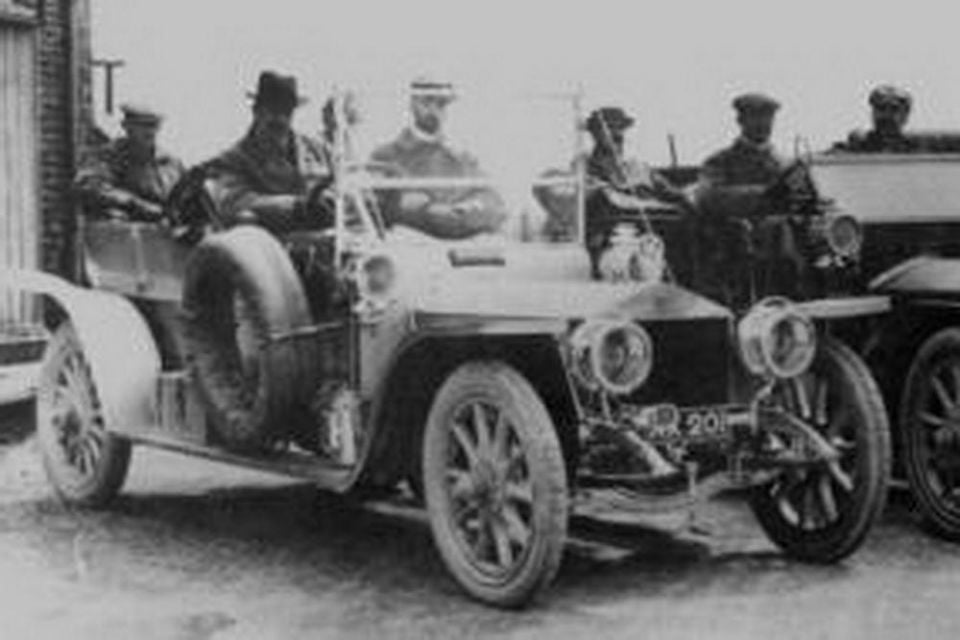
Cars at the time were launched as a chassis, with the body fitted by a separate coachbuilder, but Rolls-Royce executive Claude Johnson wanted to demonstrate the possibilities of this new chassis, so decided to create a complete demonstrator car fitted with an open-top body.
This particular car, painted silver and branded as ‘the Silver Ghost’ due to its ghost-like quietness, underwent thorough testing, including being driven approximately 15,000 miles (24,000 km).
Johnson drove the car from London to Glasgow back and forth 27 times without suffering from any major reliability issues.
The motoring press was very impressed with this achievement, particularly at a time when cars were known for being notoriously unreliable, and one particular publication, Autocar, decided to endow the vehicle with the title of ‘best car in the world.’ The ‘Silver Ghost’ name caught on and the reputation of Rolls-Royce was confirmed.
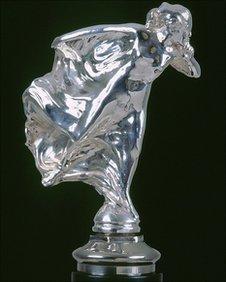
Another thing that the Silver Ghost established was the iconic Spirit of Ecstasy, perhaps the most famous bonnet ornament in the entire automotive industry.
At the time, personalised bonnet ornaments were common, and Rolls-Royce customer Lord Montagu wanted his own for his 1909 Silver Ghost.
He approached his friend, sculptor Charles Robinson Sykes, and following discussions Sykes crafted a sculpture known as ‘The Whisper’ modelled after Montagu’s secretary, Eleanor Thornton.
The Whisper depicted a beautiful woman in long flowing robes holding a finger to her lips, alluding not only to the quietness of the car, but also to the alleged affair between Thornton and Montagu.
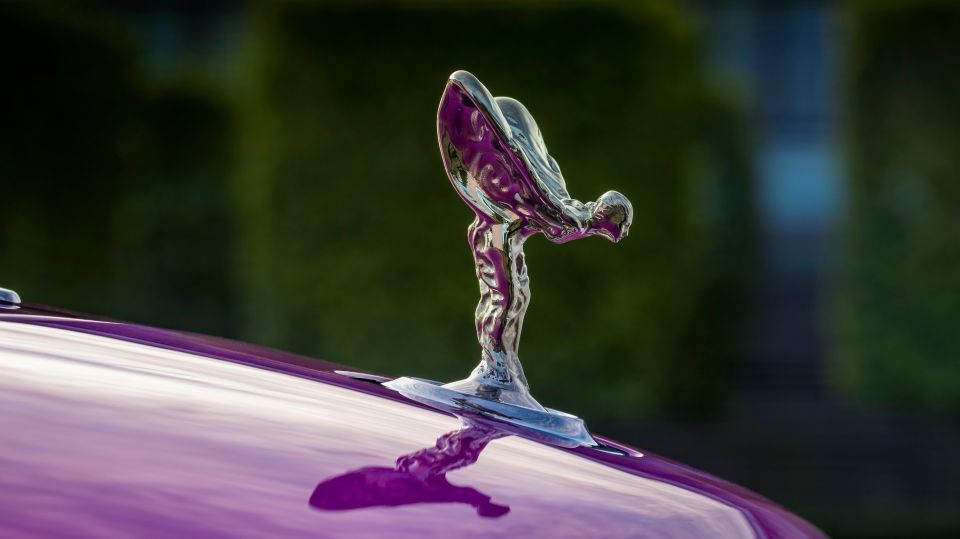
Later on, Rolls-Royce directly approached Sykes again to craft a bonnet ornament that could be used on all its models, and the sculptor decided to reprise The Whisper as a basis, albeit in a less personal (and controversial) form.
The basic feminine form was retained, but was transformed by inspiration from ancient Greek sculptures of winged victory, to resemble a lady about to leap gracefully into the air. This was in line with the ‘flying on land’ sensation, and, apart from a version where she is kneeling, has retained the same shape ever since.
Of course, Rolls-Royce also has its own corporate emblem of two interlocking Rs that use a serif font in a vaguely art-deco style, and, though set within a coat-of-arms from time to time, has largely remained unchanged since its inception.
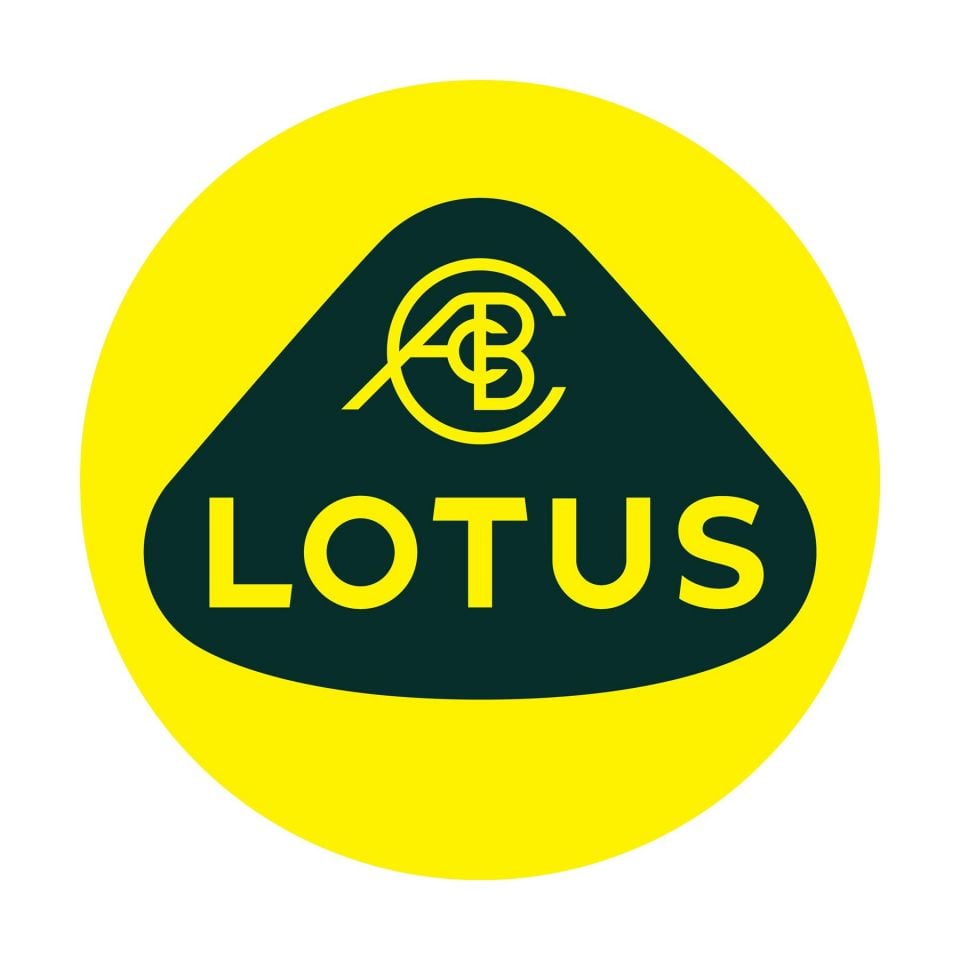
Lotus is well-known for its focus on compact sports cars that prioritise light weight over everything else, in order to maximise handling ability.
The company can trace its origins back to 1948 when engineer Colin Chapman built his first racing car with the same focus.
Why Chapman decided to name his company after a type of flower is uncertain, however the company’s emblem, although modified slightly over the years, has retained its same basic form of a stylised, rounded green triangle, an abstract reference to a lotus petal, set within a yellow circle.
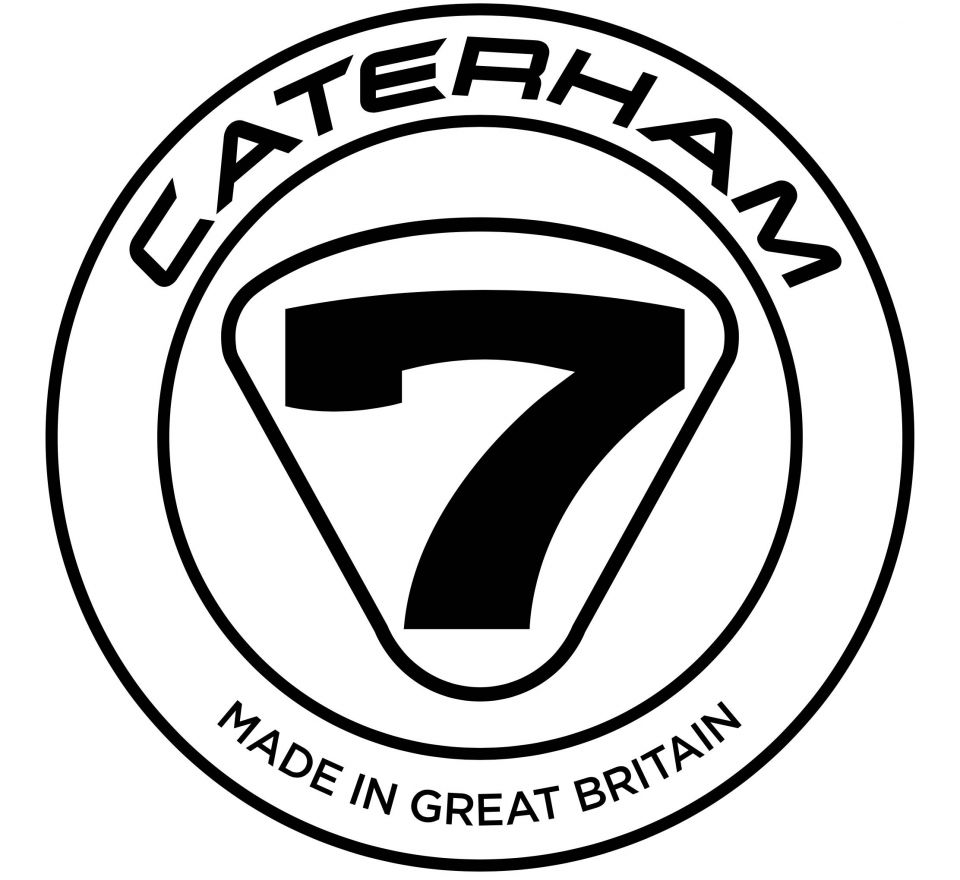
The green triangle contains the Lotus wordmark, and above that, a highly stylised acronym of Colin Chapman’s full name, Anthony Colin Bruce Chapman.
Caterham is a niche British car company that produces only one model, the Seven, that was based off the original Series 3 Lotus Seven, with Caterham having bought rights to the model’s design and associated intellectual property.
Thus, the Caterham logo remains similar to that of Lotus, with a flipped Lotus style triangle containing the number 7, surrounded by a ring with the italicised Caterham wordmark.
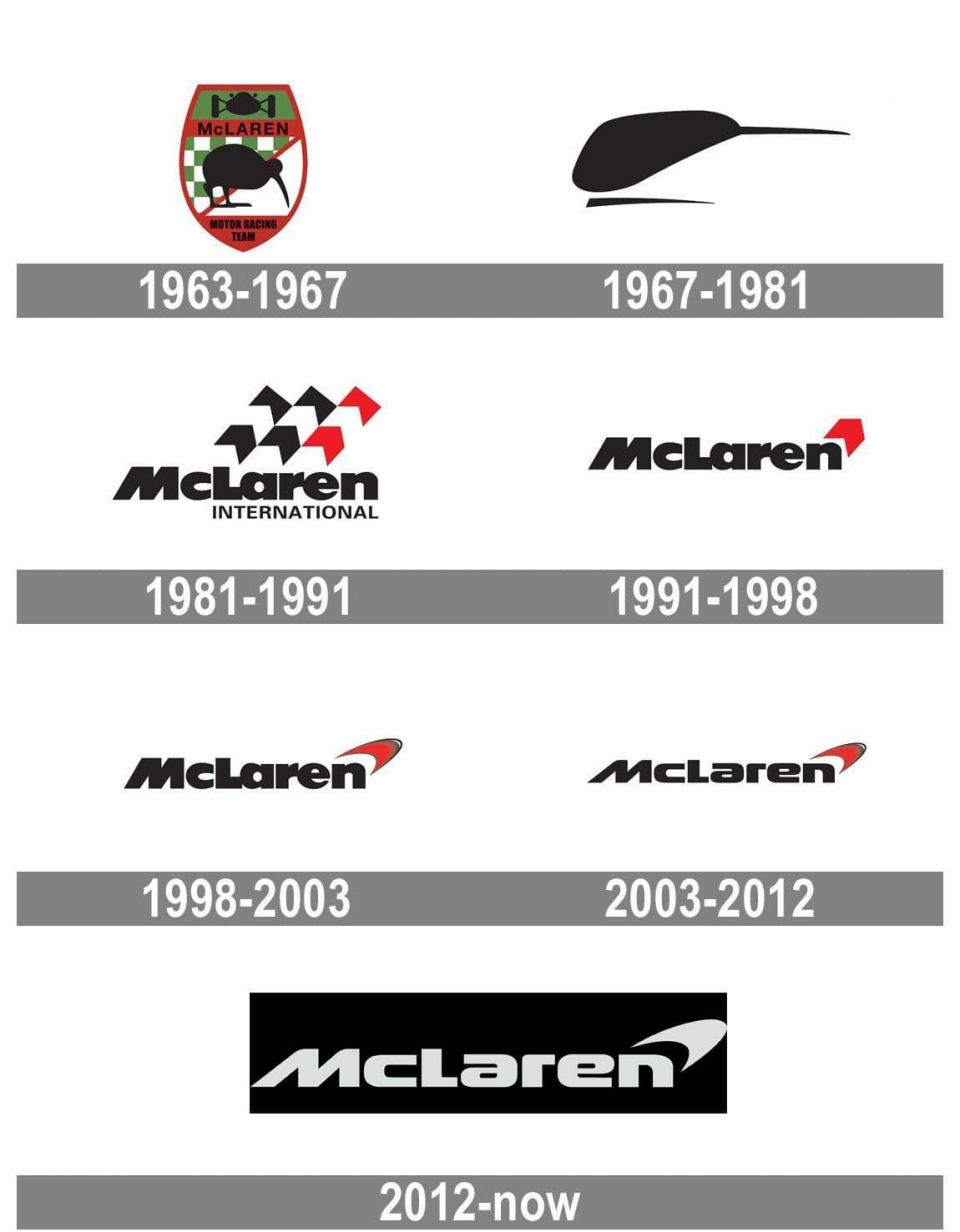
McLaren, alongside Ferrari, is perhaps one of the few automotive OEMs that started directly as a motor racing team, with New Zealander Bruce McLaren founding the team initially as ‘Bruce McLaren Motor Racing’, with the team’s first victory coming at the 1968 Belgian Grand Prix.
The brand’s emblems over the years (for both its motor racing and road car teams) reflect both McLaren’s country of origin and its motorsports heritage.
Early designs featured a kiwi, a bird native to New Zealand, within a chequered flag crest; this later evolved to a focus on the Kiwi itself, before the McLaren wordmark was introduced as the focal point of the brand’s emblem.
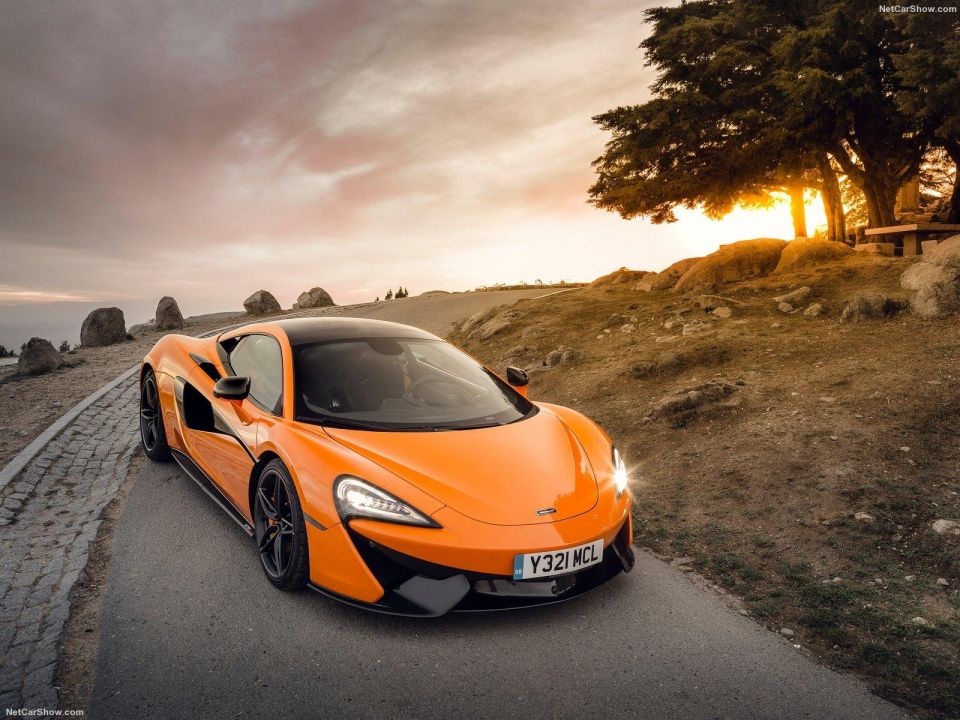
A highly stylised version of the Kiwi, now known as the McLaren swoosh, was relegated to an accent on the letter ‘n’ in the McLaren wordmark, where it remains to date.
McLaren claims that this swoosh also represents the vortices and shape of the air created by the tail of a McLaren sports car during aerodynamic testing.
An interesting feature of some newer McLaren sports cars is the use of the swoosh as a design element for the headlight housings.

Jaguar was formed as the Swallow Sidecar company in 1922, by motorcycle enthusiasts William Lyons and William Walmsley, who set about manufacturing bodies for motorcycle sidecars.
Swallow Sidecars would soon be abbreviated to S.S. Cars following Walmsley’s departure from the firm, and the brand turned its attention to the development of automobiles during the 1930s, with ‘Jaguar’ initially appearing as a model name used as part of the firm’s 1935 SS Jaguar 2.5i Saloon.
Of course during the Second World War, the letters ‘SS’ would acquire notoriety as the Nazi Party’s paramilitary organisation, and to avoid any connection between the two, Swallow Sidecars was quickly renamed to the more distinctive and emotional Jaguar following the war.

The company’s emblem of a literal leaping jaguar aligns with William Lyons’ original vision for his cars to have ‘grace, space and pace’ in equal measure, and has remained constant ever since, with the leaping cat being used as a bonnet ornament, and (from a sideways perspective) the corporate emblem ever since.
Jaguar vehicles sold today also feature a front-on view of a jaguar’s head on the radiator grille.
Land Rover can trace its origins back to 1948 when the Rover Company decided it wanted a rugged Jeep-style, off-road capable vehicle (hence the name ‘Land’ Rover), before becoming a separate brand in its own right after 1978.
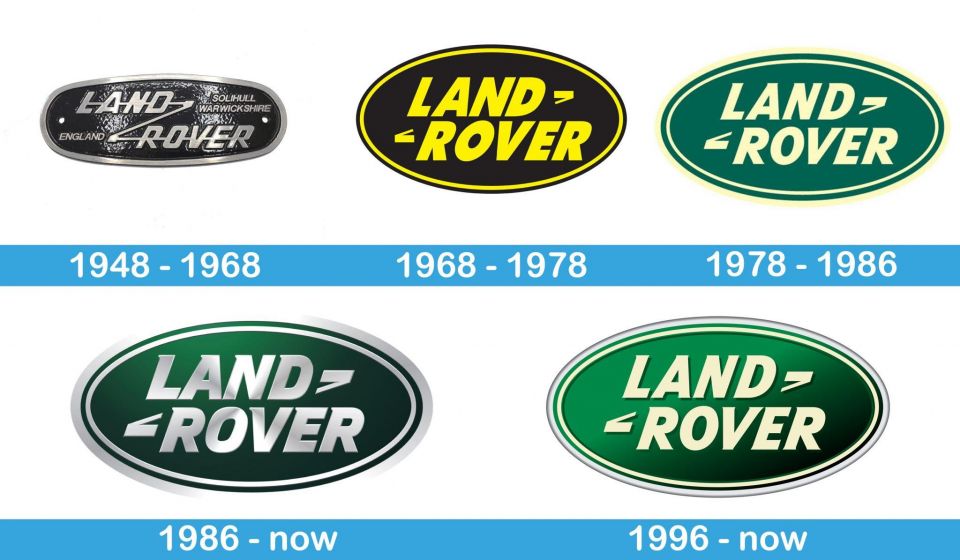
Initial Land Rovers, which bore similarity to the previous generation Defender, were initially only available in green as they were painted with surplus green paint that the Royal Air Force used during WWII.
Legend has it that the ovular shape of the Land Rover logo has a very humble origin – namely that model designer Maurice Wilks was eating a can of sardines, which created an oval shaped stain on his desk that he then used as the basis for the emblem.
The emblem’s iconic green colour arguably harks back to the original green shades of paint used for early Land Rover models.
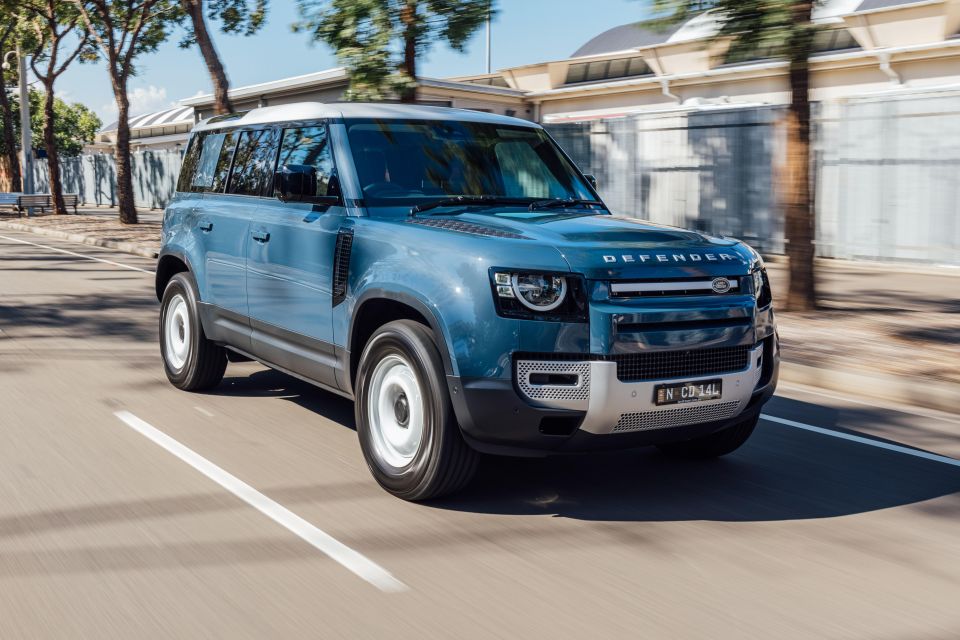
Similar to the Jaguar emblem, the Land Rover logo has changed little since its inception, apart from being modernised with a different font for the ‘Land Rover’ lettering, and the ‘Z’ line connecting the two words transforming to resemble quotation marks instead.
MORE: Badge histories, British brands part 1 MORE: Badge histories, American brands part 1 MORE: Badge histories, American brands part 2 MORE: Badge histories, Italian brands part 1 MORE: Badge histories, Italian brands part 2 MORE: Badge histories, French brands MORE: Badge histories, German brands


Max Davies
9 Hours Ago


William Stopford
9 Hours Ago


Derek Fung
9 Hours Ago


Max Davies
17 Hours Ago


William Stopford
1 Day Ago


Ben Zachariah
1 Day Ago